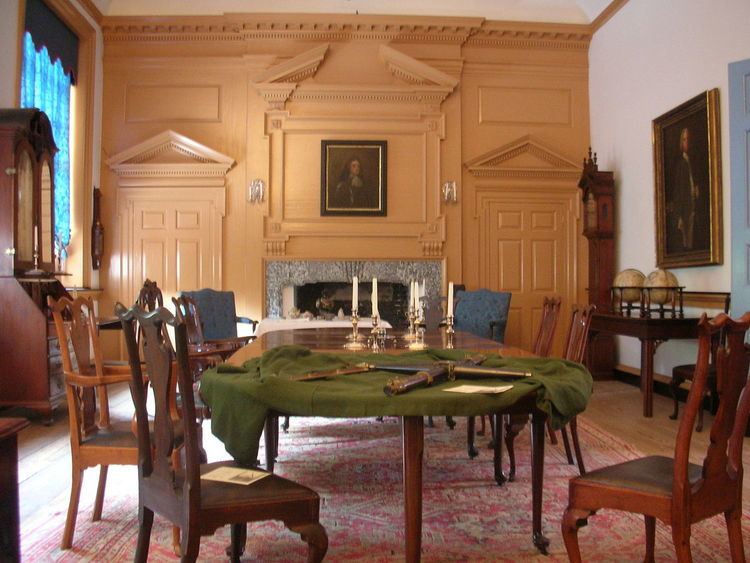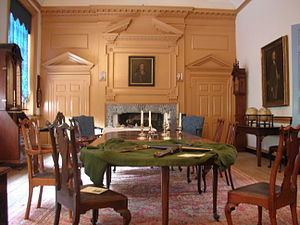Name William Savery Role Cabinetmaker | Died 1787 | |
 | ||
William Savery (cabinetmaker) (1721 or 1722 - 1787, Philadelphia, Pennsylvania) was an 18th-century American cabinetmaker noted for his furniture in the Queen Anne and Philadelphia Chippendale styles.
Contents

Biography
He served a 7-year apprenticeship under the Philadelphia cabinetmaker Solomon Fussell, beginning in 1735. In 1742, at about age 21, he opened his own shop on Second Street, just south of High (now Market) Street in Philadelphia. Benjamin Franklin was an early patron (and a parton of Fussell), and two Savery-attributed pieces descended in Franklin's family. In 1754 Savery was appointed a ward tax assessor, serving under Franklin.
In addition to custom pieces in mahogany and walnut, Savery manufactured large numbers of maple rush-seated chairs. Some of his pieces are marked with an "S." A rare few retain their original paper labels:
"All Sorts of Chairs and Joiners Work Made and Sold by WILLIAM SAVERY, At the Sign of the Chair, a little below the Market, in Second Street. PHILADELPHIA."
On April 19, 1746 he married Mary Peters in Philadelphia. Their son, William Jr., became a notable Quaker preacher and abolitionist. Their other son, Thomas, continued in the furniture trade.
Rediscovery
Early in the 20th century, the walnut dressing table at Van Cortlandt House Museum in The Bronx became the first labeled Savery piece rediscovered by scholars. This led them to attribute many unmarked Philadelphia pieces to Savery (see Halsey and Dyer, below). Subsequent scholarship has cast doubt on many of these early attributions.
